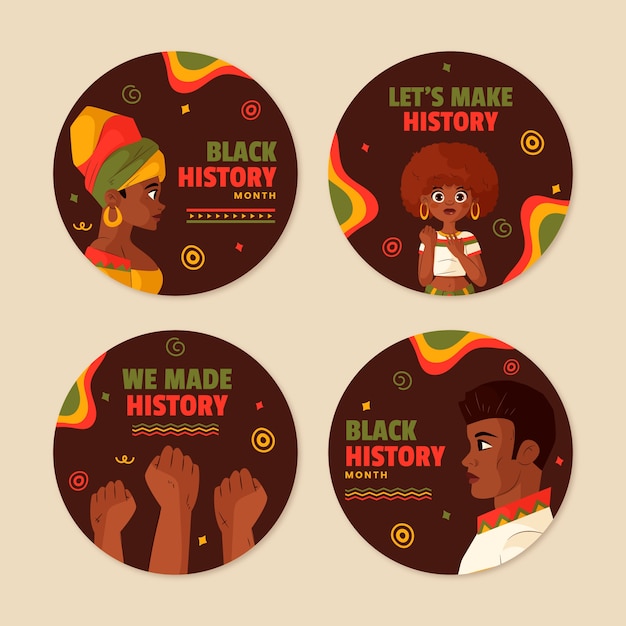Discovering Black History – Fascinating Facts for Kids

Did you know that the first African American president of the United States was Barack Obama?
Harriet Tubman was a brave African American woman who helped free slaves through the Underground Railroad.
Rosa Parks, an African American civil rights activist, refused to give up her seat on a bus, sparking the Montgomery Bus Boycott.
Dr. Martin Luther King Jr., an influential African American leader, played a crucial role in the civil rights movement.
Mae Jemison, an African American astronaut, became the first black woman to travel to space.
The Harlem Renaissance was a period in the 1920s when African American arts, literature, and music flourished in Harlem, New York.
Katherine Johnson, an African American mathematician, made significant contributions to NASA’s early space missions.
The Tuskegee Airmen were the first African American military aviators in the United States Armed Forces during World War II.
The Emancipation Proclamation, issued by President Abraham Lincoln, declared freedom for slaves in Confederate territory during the Civil War.
The Negro National Anthem, Lift Every Voice and Sing, was written by James Weldon Johnson and his brother in 1900.
Maya Angelou, an African American poet and civil rights activist, is widely known for her memoir I Know Why the Caged Bird Sings.
The first African American to win Wimbledon was Althea Gibson, a trailblazing tennis player.
The Greensboro sit-ins were a series of protests in 1960 where African American students sat at whites-only lunch counters to fight for desegregation.
Discovering Black History – Fascinating Facts for Kids part 2
Mary McLeod Bethune was an influential African American educator and civil rights leader who founded a private school for black students.
Jackie Robinson broke the color barrier in professional baseball when he became the first African American player in Major League Baseball.
Thurgood Marshall was the first African American Supreme Court Justice and a key figure in the legal battles against racial segregation.
The March on Washington in 1963, where Dr. Martin Luther King Jr. gave his famous I Have a Dream speech, was a pivotal moment in the civil rights movement.
Bessie Coleman, the first African American female pilot, paved the way for future aviators.
The Negro Leagues were professional baseball leagues created for African American players during a time of segregation in sports.
Ruby Bridges, an African American girl, was the first black student to attend an all-white elementary school in the South.
The Brown v. Board of Education Supreme Court case in 1954 ruled that segregated schools were unconstitutional.
The Buffalo Soldiers were African American regiments that served in the U.S. Army after the Civil War.
Phillis Wheatley, an enslaved African American, became the first published African American female poet.
The Great Migration was a period during the early 20th century when millions of African Americans moved from the rural South to cities in the North and Midwest.
Nelson Mandela was an influential African leader who fought against apartheid and became South Africa’s first black president.
The Underground Railroad was a network of secret routes and safe houses that helped slaves escape to freedom.
Sojourner Truth was an African American abolitionist and women’s rights activist known for her powerful speeches.
The Montgomery Bus Boycott, led by Dr. Martin Luther King Jr., was a year-long protest against segregation on city buses.
African American inventor Garrett Morgan developed the modern traffic signal and a protective hood for firefighters.
The 369th Infantry Regiment, also known as the Harlem Hellfighters, was an African American unit that fought in World War I.
Shirley Chisholm was the first African American woman elected to the United States Congress.
The Civil Rights Act of 1964 prohibited discrimination based on race, color, religion, sex, or national origin.
Daniel Hale Williams, an African American surgeon, performed one of the first successful open-heart surgeries in the United States.
The Black Panthers were a revolutionary black nationalist organization that aimed to empower the African American community.
African American author Langston Hughes was one of the leading figures of the Harlem Renaissance and known for his poetry and novels.
Frederick Douglass, an escaped slave, became a prominent abolitionist, writer, and statesman.
The 13th Amendment to the United States Constitution abolished slavery and involuntary servitude.
The sit-ins at Woolworth’s lunch counter in Greensboro, North Carolina, were pivotal in the struggle for desegregation.
Mae C. Jemison, the first African American woman in space, also holds degrees in chemical engineering, African and African American studies, and medicine.
Benjamin Banneker, an African American mathematician, astronomer, and surveyor, helped to design Washington, D.C.
The National Museum of African American History and Culture in Washington, D.C., showcases the rich history and contributions of African Americans.
African American musician Louis Armstrong, known as Satchmo, was one of the most influential jazz artists of all time.
The Little Rock Nine were a group of African American students who faced intense opposition when they tried to enroll in an all-white high school in Arkansas.
African American inventor Lewis Howard Latimer improved the carbon filament used in the light bulb, making it last longer.
Phillis Wheatley’s poetry collections, published in the late 18th century, challenged stereotypes and laid the foundation for future African American writers.

